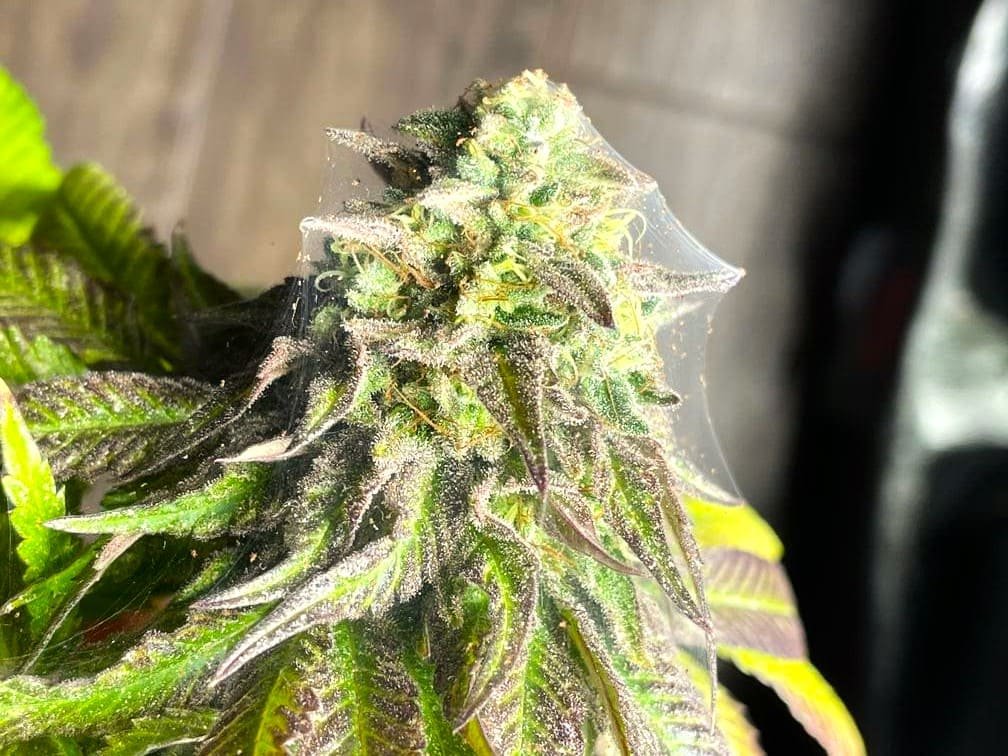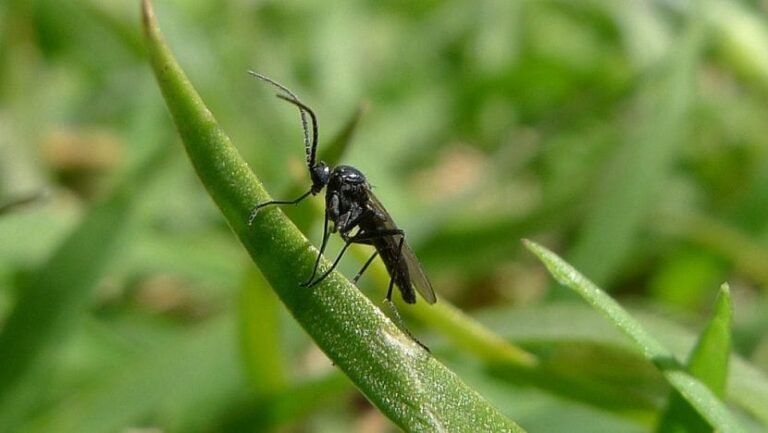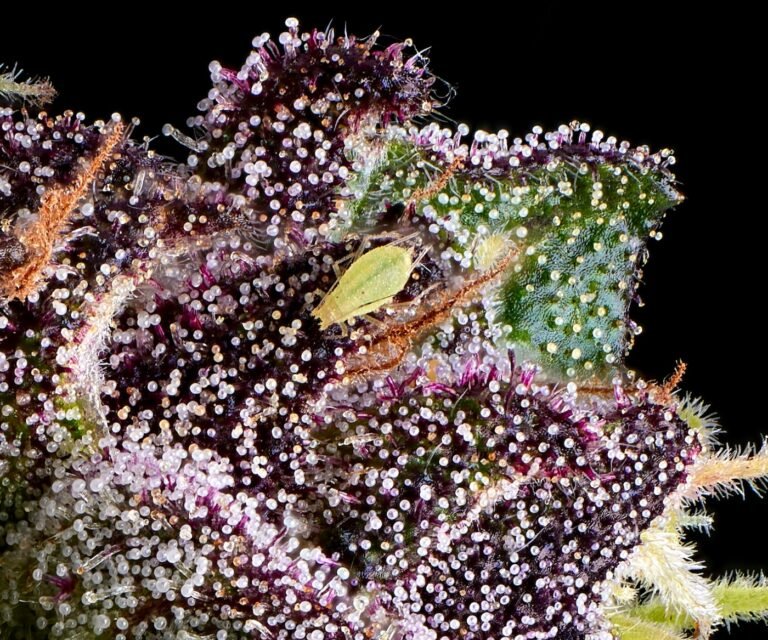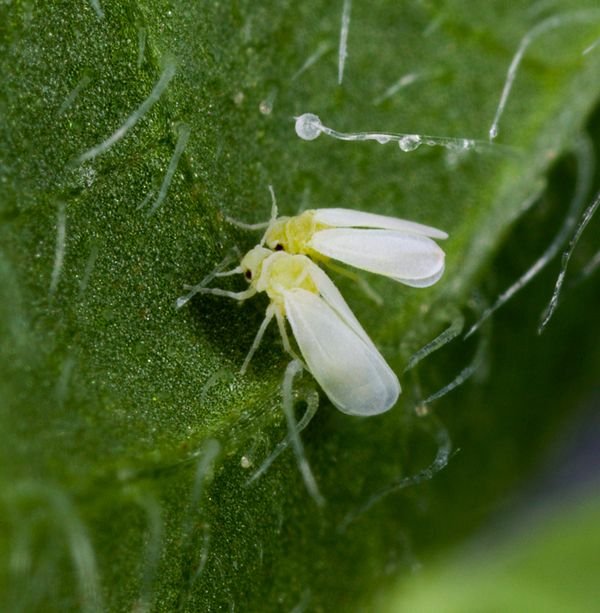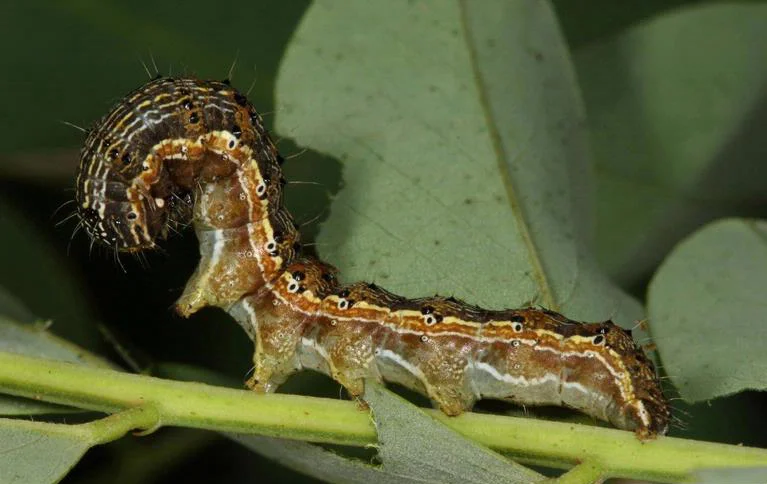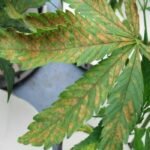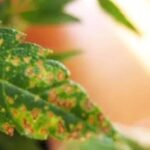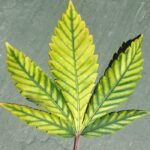Red spider can cause serious problems in cannabis plants, causing significant damage that affects both the quality and quantity of the harvest and can even kill it if you left it unchecked.

This pest is known for its reddish-yellow color, although its size is usually less than 1 millimeter. You might find red spiders behind leaves, they feed by sucking the contents of leaf cells, resulting in small yellow discolored spots on the surface of the leaflets. Additionally, if the infestation continues, they produce fine webs on the leaves and buds.
This pest is difficult to detect with the eyes due to the spiders’ tiny size, but their presence is evident by the damage they cause to plants. Therefore, I advise you to check behind the leaves regularly.
How to detect the red spider pest?
The first symptoms to appear are white or yellow pinpoint spots that accumulate along the leaves and may even discolor them to a light grayish green. The leaves will become completely discolored and may even fall off, and the fine webbing will be visible on the backs of leaves and even on the flowers. The final stage of colonization is when the plants become completely covered in webbing, ultimately resulting in their death.

Red spider in outdoor
In outdoor growing, the red spiders tend to attack marijuana plants that suffer from relatively long periods of drought and are subjected to high temperatures and very low relative humidity, as the ideal environment for spiders development is high temperatures and a dry environment.
Red spider in indoor
In indoor growing, the red spiders are one of the most common pests and have the greatest potential for crop destruction, as high temperatures and low humidity are quite common in indoor grows under artificial light. Especially indoors, the pest can completely kill the plant if is not controlled in time.
If you grow indoors in the summer and you don’t have good ventilation systems, you will suffer greatly from this pest.
How to eliminate the pest?
Use Neem oil with Potassium soap to avoid over-contaminating the plant with chemicals. If that’s not enough, you should apply an insecticide.
Another option is to use natural predators such as ladybugs.




